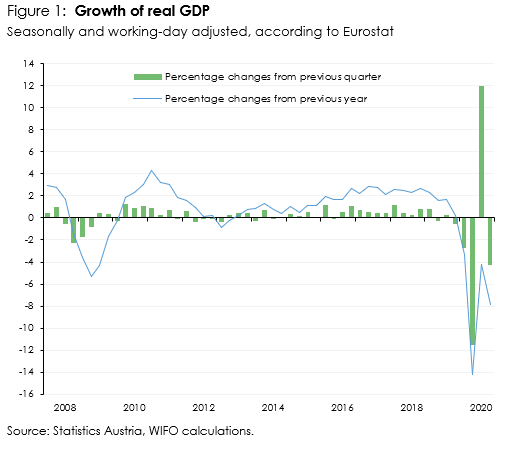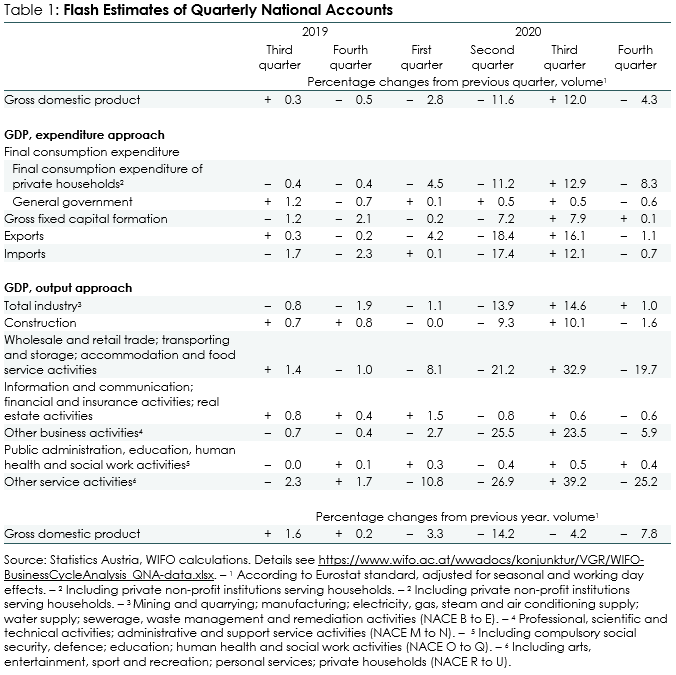
GDP Fell by 4.3 Percent in the Fourth Quarter of 2020
Important Information
Since the end of September 2020, the quarterly National Accounts are compiled and published by Statistics Austria. The WIFO Flash Estimate builds on this calculation and provides an estimate for the following quarter. This includes GDP and components in the form of seasonally and working-day adjusted rates of change compared with the previous quarter (key figure according to Eurostat specifications).
The figures presented in this calculation are first estimates and as such are subject to uncertainties and possible revisions.
On 1 March 2021, Statistics Austria will publish quarterly data for GDP and main aggregates for the fourth quarter of 2020 based on more complete data, as well as preliminary annual data for 2020.
Following the rebound in third quarter of 2020 (+12.0 percent), domestic economic output fell again as a result of the measures taken in the second lockdown. According to first calculations, GDP fell by 4.3 percent in the fourth quarter of 2020 compared with the previous period (key figure according to the Eurostat). Year-on-year, this means a decline of 7.8 percent compared with the fourth quarter of 2019.
Renewed restrictive measures to contain the COVID-19 pandemic in the fourth quarter mainly affected the consumer-related service sectors. Value added in trade, accommodation, food service activities and transportation fell by 19.7 percent; in other service activities, which include personal services (e.g. hairdressers), arts, entertainment and recreation, the decline in value added was 25.2 percent (both compared with the previous quarter). In line with this, consumer demand from private households (including private non-profit institutions serving households) also fell sharply again (–8.3 percent compared with the third quarter of 2020).
By contrast, industrial and construction activity was more stable, with value added in industry (NACE B to E) rising by 1 percent in the fourth quarter. A decrease of 1.6 percent was recorded in the construction industry.
Foreign trade continued to be impacted by the global downturn, with exports falling by 1.1 percent and imports by 0.7 percent. By contrast, investment demand remained stable, with gross fixed capital formation barely changing (+0.1 percent) compared with the previous quarter.


Publications
Please contact
























